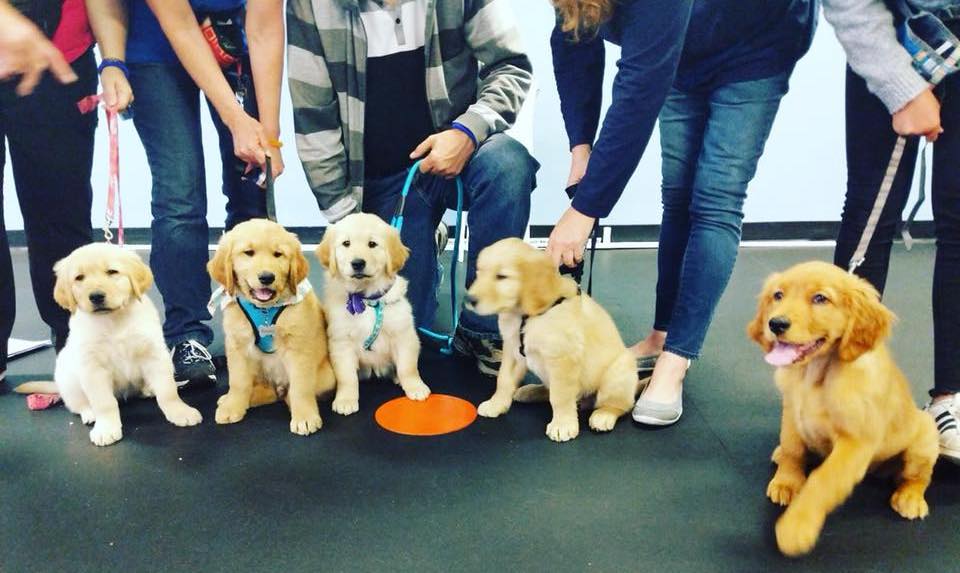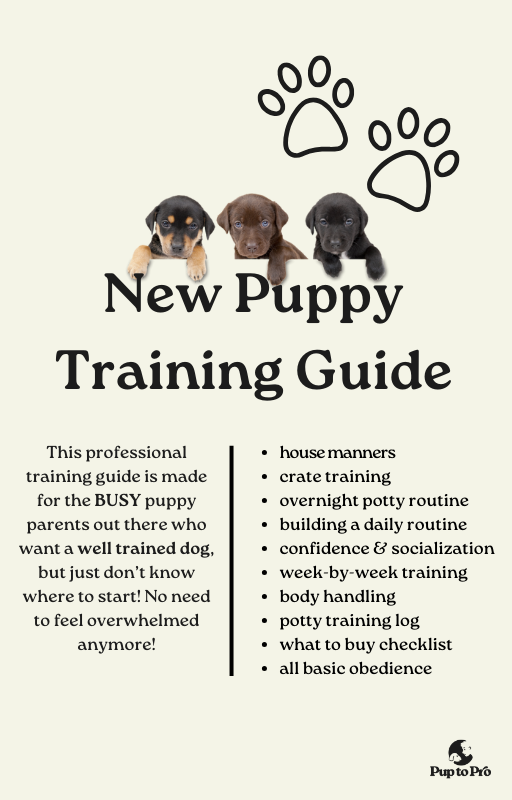Puppy Training Techniques: Teaching Basic Commands for a Happy Pet
Puppy Training Techniques: Teaching Basic Commands for a Happy Pet
Blog Article
Top Young Puppy Educating Strategies to Guarantee a Well-Behaved Animal
Reliable young puppy training is critical for growing a mannerly companion, and various techniques can dramatically influence a pet dog's growth. As we explore these techniques even more, it ends up being clear that the success of pup training pivots on a combination of techniques that can change your animal's actions in amazing methods.
Favorable Reinforcement Strategies
Using favorable reinforcement methods is important for effective young puppy training, as it encourages preferred behaviors with benefits instead of penalty. This method capitalizes on the natural learning procedures of pets, enhancing good actions by giving concrete and immediate incentives, such as deals with, praise, or play. By associating positive results with particular activities, puppies are most likely to repeat those behaviors in the future.
Effective positive reinforcement includes timing and uniformity. Benefits must be given promptly after the desired behavior occurs to develop a clear link in the young puppy's mind. Additionally, differing the sorts of incentives can preserve a pup's interest and inspiration throughout the training procedure. Some pups may react far better to spoken appreciation while others may like a favorite toy or reward.

Consistency in Training Commands
Keeping uniformity in training commands is essential for enhancing the lessons learned with positive reinforcement strategies. Dogs flourish on routine and predictability, so making use of the same verbal commands and hand signals for particular habits is important. This harmony assists pups comprehend what is expected of them, decreasing confusion and irritation for both the instructor and the pet.

Timing additionally plays a substantial role in consistency. Commands must be provided immediately throughout training sessions and complied with quickly by favorable reinforcement, such as deals with or praise. This immediate response assists strengthen the association in between the command and the wanted habits.
Incorporating uniformity into training sessions will produce a steady understanding setting, promoting quicker proficiency of commands. Ultimately, a well-structured technique fosters a solid bond in between the young puppy and its proprietor, leading to a more mannerly and loyal pet.
Socializing With Various Other Pets
Socializing with other family pets is essential for a pup's advancement, as it helps them discover suitable habits and interaction abilities in varied social contexts. Early communications with different pets can dramatically influence a pup's temperament and versatility in numerous scenarios. When pups are subjected to a variety of family pets, they end up being much more positive and much less scared, which can protect against potential behavioral concerns later in life.

Educate your young puppy to identify signals from various other animals, such as indications of playfulness or pain, promoting mutual regard and understanding. Regular socialization not only enhances your puppy's social abilities yet additionally adds to their overall health, creating a much more harmonious living environment.
Crate Training Benefits
Acknowledging the numerous advantages of pet crate training can considerably improve both the young puppy's and owner's experience. Crate training offers a protected and safe atmosphere for young puppies, guaranteeing they feel secured browse around this web-site when left alone. This complacency can significantly minimize anxiety and tension degrees for both the pet and the proprietor.
Furthermore, crates act as a valuable house-breaking tool. Pups naturally prevent dirtying their resting location, thereby encouraging them to hold their bladder till they are allow outdoors. This impulse can accelerate the house-training process, cultivating excellent behaviors beforehand.
Crate training additionally helps in handling a pup's actions when unsupervised. By giving an assigned room, owners can stop damaging actions, such as chewing on furniture or entering into harmful compounds. Cages can be advantageous throughout travel, providing an acquainted room that can aid calm a pup in brand-new atmospheres.
Finally, developing a pet crate routine encourages independence, enabling young puppies to find out how to be alone without concern. Overall, dog crate training is an efficient method for advertising peace, security, and discipline, bring about a well-adjusted, well-behaved animal.
Leash Training Essentials
Leash training is a fundamental element of liable pet ownership that makes certain a pleasurable and safe walking experience for both the young puppy and its proprietor. Proper chain training starts early, preferably during the young puppy's socialization period. When out in public., this training helps develop good behaviors and advertises positive habits.
To begin, choose a comfortable collar or harness that fits your pup well. Attach a tough leash, ensuring it is not too long, as this can result in pulling and unpredictable behavior. Start in a quiet environment to minimize diversions and gradually present your puppy to new surroundings.
Usage positive support techniques, such as treats and praise, to encourage your pup to stroll next to you. If site your young puppy pulls, stop strolling and wait for them to return to your side before proceeding.
In addition, include brief training sessions with fun diversions to build your puppy's focus. With dedication and persistence, leash training will lead to a well-mannered buddy, making strolls pleasurable for both the proprietor and the pup.
Final Thought
In verdict, using effective puppy training methods is crucial for creating a mannerly family pet. In general, these approaches jointly advertise an unified connection in between young puppies and their proprietors.
As we explore these techniques even more, it ends up being clear that the success of pup training pivots on a combination of approaches that can transform your family pet's behavior in exceptional ways.
Making use of favorable support methods is important for efficient pup training, as it motivates preferred behaviors through benefits instead than penalty.Crate training likewise helps in handling a young puppy's behavior when not being watched.Leash training is a fundamental facet of accountable pet dog possession that ensures a risk-free and enjoyable strolling experience for both the puppy and its owner.In verdict, utilizing effective puppy training strategies is critical for developing a well-behaved pet dog.
Report this page